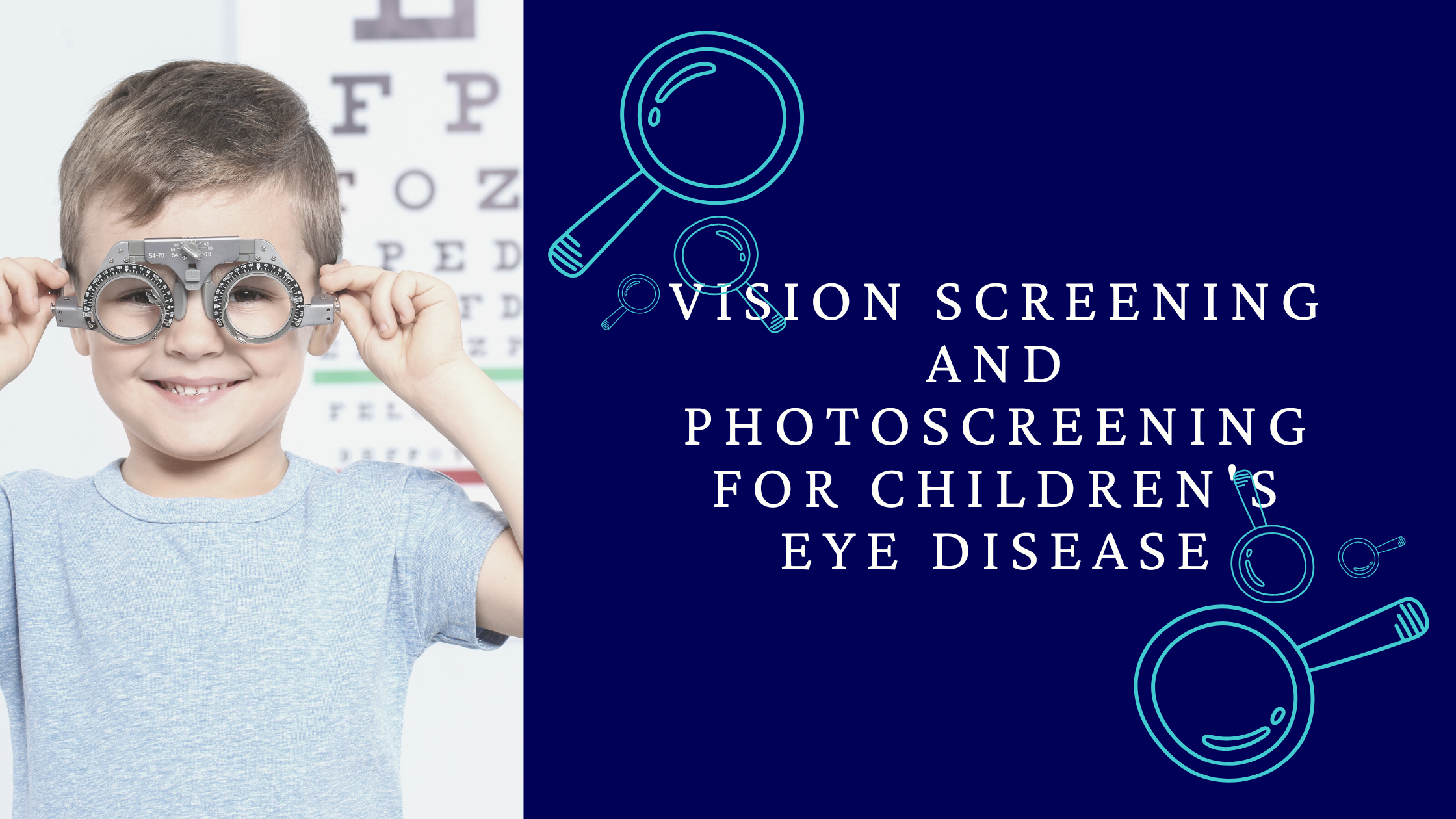 One of the proudest accomplishments a parent can have is watching their child grow up. Seeing them take their first steps, hearing their laughter, and finally saying their first words. Unfortunately, because eye doctors have to rely on verbal confirmation from children on what they see and how they see, doctors can only begin eye checking around three years old. Because of this, we lose that essential window of time to identify common eye diseases. Thankfully, with routine vision screening and photoscreening, doctors can better grasp your child’s eye problems, getting you a diagnosis earlier than ever.
One of the proudest accomplishments a parent can have is watching their child grow up. Seeing them take their first steps, hearing their laughter, and finally saying their first words. Unfortunately, because eye doctors have to rely on verbal confirmation from children on what they see and how they see, doctors can only begin eye checking around three years old. Because of this, we lose that essential window of time to identify common eye diseases. Thankfully, with routine vision screening and photoscreening, doctors can better grasp your child’s eye problems, getting you a diagnosis earlier than ever.
Common Childhood Eye Diseases
How your child’s eye develops could change in an instant, which is why it is so important to bring them in to see a specialist for routine screenings – or photoscreenings, depending on their age. Doctors can then use their examinations to look for signs and symptoms of common eye diseases.
- Amblyopia
The leading cause of vision loss among children. Amblyopia occurs when one eye becomes weaker than the other- which gave the disease the term “lazy eye.” Common causes for children developing amblyopia are untreated refractive errors, strabismus, or visual obstructions like drooping eyelids or cataracts. Though it is a preventable eye disease, Amblyopia still affects 2-3% of children. - Strabismus
Also known as “cross-eyed,” strabismus can occur in 4% of children where one eye may become misaligned. This eye can turn inward (esotropia) or outward (exotropia). Strabismus could also be caused because of another medical condition. - Glaucoma
This non-refractive error occurs when the eye’s fluid pressure slowly increases and cannot drain correctly. Because the fluid has no exit route, it can build up over time, causing pressure damage to the optic nerve. Glaucoma can either be present at birth or develop with your child. - Cataracts
Either affecting one eye or both, cataracts are the most common non-refractive error found in children. Cataracts are a clouding over a previously transparent area on the eye lens, preventing light from entering the eye. Potential causes of cataracts could include blunt trauma, steroid use, childhood diseases, or diabetes. - Retinoblastoma
A rare childhood eye cancer caused by genetic mutations in nerve cells, developing a cancerous tumor. Symptoms for identifying retinoblastoma include eye pain/discomfort, sclera redness, and iris color irregularity.
What are Photoscreenings?
A specialist may recommend instrument-based vision screening when arriving at a routine screening. Endorsed by the American Academy of Pediatrics, instrument-based vision screening is an effective way to screen infants and children who cannot perform visual acuity screening. Visual acuity screening involves standing 10 feet away from a chart and listing letters and shapes you see. Typically, photoscreening can allow children ages 1-3 or non-verbal and special needs children to be tested more accurately. In doing so, it leads to earlier detection of potential problems.
Photoscreening involves using an instrument that produces images to identify refractive errors through special light reflexes. Photoscreening is common when identifying signs of amblyopia. If a photoscreening test comes back identifying refractive errors, there is a high probability that the patient could be at risk for amblyopia. Thankfully, new technological advancements have made it easier to begin detecting eye problems in your kids. New apps, like Kids Vision Check, have developed AI detection software that allows you to screen your kids. All you have to do is use the back camera flash and take a photo of your child’s face while in a dimly lit room. From there, the AI will do its magic and bring you up to speed on how your kid’s vision develops. If it detects a problem, the app can provide information on how to get in touch with specialists in your area.
When to Plan a Vision Screening
Like health and wellness checks, experts recommend vision screenings to ensure your child’s vision is developing correctly. Though doctors can screen during well-child visits, you should bring your child in to see an experienced ophthalmologist or optometrist if you want more out of the evaluation process. Other screenings are recommended for different ages depending on their milestone dates:
- Newborn/Infant
Newborns are commonly tested for “red reflex,” blinking, and pupil light response. In doing so, professionals can detect if the child was born with an eye defect and, if so, how complex the issue may be. Newborn screenings are vital for premature babies. Doctors may determine how developed the infant’s eyes are and if there are significant eye issues caused by premature birth. - Birth to six months
Though this time, screening is not necessary, it is an opportune time to discuss your family’s history and if there are any significant genetic conditions of which your doctor should be aware. - Six months to one year
Continuation of previous tests will occur during this routine screening. Doctors will also add tests to ensure the baby’s eyes are healthily aligned and moving correctly- a test conducted to detect early signs of strabismus. Typically, this is done by bringing a toy close to its face before moving it to see if the child follows it properly. - One to two years
Because children at this screening stage cannot verbally signify issues, instrument-based screening devices tend to be introduced. This can include the previously mentioned photoscreeners, autorefractors, and computer-automated devices. - Three years and up
Now that the child is likely to begin verbalizing and recognizing shapes, visual acuity screening tends to be introduced at this stage. This includes asking your child the level of visibility certain letters or symbols appear.
Your child’s vision journey allows them to experience the world they’re growing up in. Take the next step today in assuring they receive the proper vision health by scheduling a screening or downloading the Kids Vision App.
